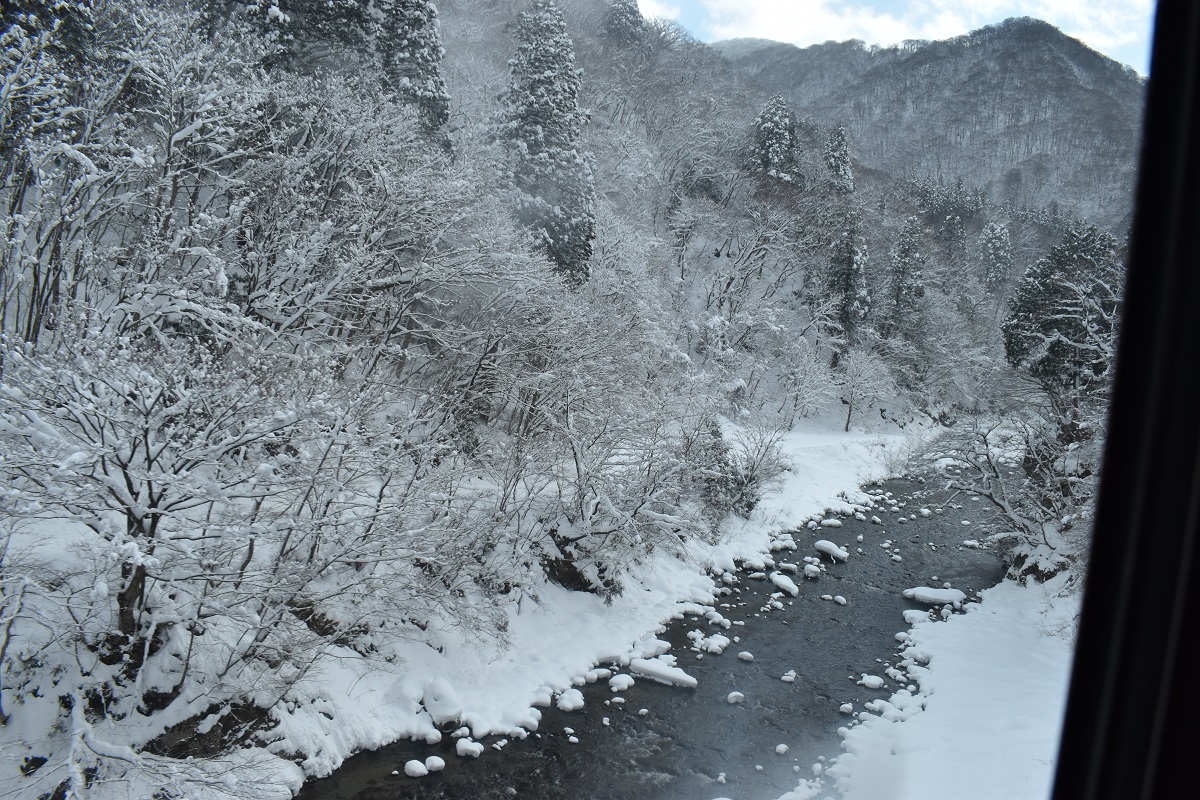Before the shuttle bus group arrives, take a lecture at the Brown Bear Information Center about how to climb the mountain. The important thing is to know what to do to avoid encountering a bear, and I have hardly ever thought about what to do in case I do come across one. Even if you wear a bear bell, it will be drowned out by the sound of the river around the stream. If you are a certain distance away from a bear you encounter, you will back away while looking into the bear’s eyes, and if you are attacked at close range, you will protect your neck with your hands under your backpack, but what would you do if your hands were bitten by bear? All you can do is decide not to think about encountering such a thing. The exit from the center is also on your way home, so make a donation or buy some goods from the center to show your appreciation for the safety efforts.
Now it’s time to tour the swamp. One circuit clockwise takes 5 hours, but the second half is downhill so you will need some climbing equipment. If you turn back at Kogen-numa(swamp) just before the deepest Sora-numa, you won’t need any mountaineering equipment and can return in 4 hours round trip. If you look at the map, you can see that this is a place where the mountain collapsed and created swamps, but it is a fairly long mountain trail and should not be considered a hike. It is better to at least wear mudguard spats on your foot.
(Source: Excerpt from the Ministry of the Environment website)
Final descending time for each of the three major swamps is announced, and instructors are always on standby there regardless of the weather. I felt that it was hard work for the instructors to call out to every climber, but since they were standing all the time without even ringing a bear bell, so I thought that calling out to them was also a measure against bears. (I’m sorry.) Early morning and evening are prime times for bears to be seen.

At this time of final descent, few people will associate it with the red demon of the Mt. Rokko traversal competition (Kobe City). I once participated in a competition where I ran 48 km of Mt. Rokko from Suma to Takarazuka in one day. A red demon will chase you from the last place, and at each checkpoint it will display how many minutes it will take to arrive, and if you are overtaken by this, you will be told that the race is over and you will not be able to complete the race. Furthermore, when you finish the race, you will receive a small shield to prove your completion. The next day, my body was in shambles.
Now, go back to the tour. For the first hour, you walk through wetlands dotted with skunk cabbage that looks like it’s been devoured by bears,
If you’re lucky, you might be able to spot the brightly colored wild bird, the Ginzanmashiko,
And then you arrive at Takimi-numa. There are many temples in Kyoto with wonderful gardens, but Takimi-numa surpasses them in its ultimate natural beauty. The exquisite balance between the close-up view of the swamp and the distant view of the colorful autumn leaves arranged like a folding screen on the slope is out of this world. You can enjoy it on both sunny and even rainy days.
Midori-numa, which appears next to Takimi-numa, has an open landscape and is one of swamps with final decending time set. Each swamp has a completely different look.
After a while along the mountain trail, you will come to Ezo-numa. It appears to be a swamp formed like a terraced rice field at the edge of a slope, but the end of the break in the trees in the middle seems to be a waterfall over there, and the reflection of the autumn leaves on the water’s surface is nothing short of beautiful.
When you walk further, you will see the cliffs of Takanegahara and Shikibu-numa where the reflection of the autumn leaves on the water’s surface is also beautiful.
As you climb further, Daigaku-numa appears at the foot of the cliff.
The turning point, Kogen-numa, will be just around the corner. If the weather is good, you can see Mt. Midoridake over there look like the mountain is wrapped in red sashes of autumn leaves. Time is up here. Before I knew it, the light rain had gotten heavier, so I turned back.
It took about 5 hours round trip as I went slowly. After eating up some warm ramen at an inn in Daisetsu Kogen Onsen, I headed straight to New Chitose Airport. There was no time to stop by to see the Sounkyo waterfall. The road along the way is covered in terrain full of columnar joints.



































































































































































































































































































